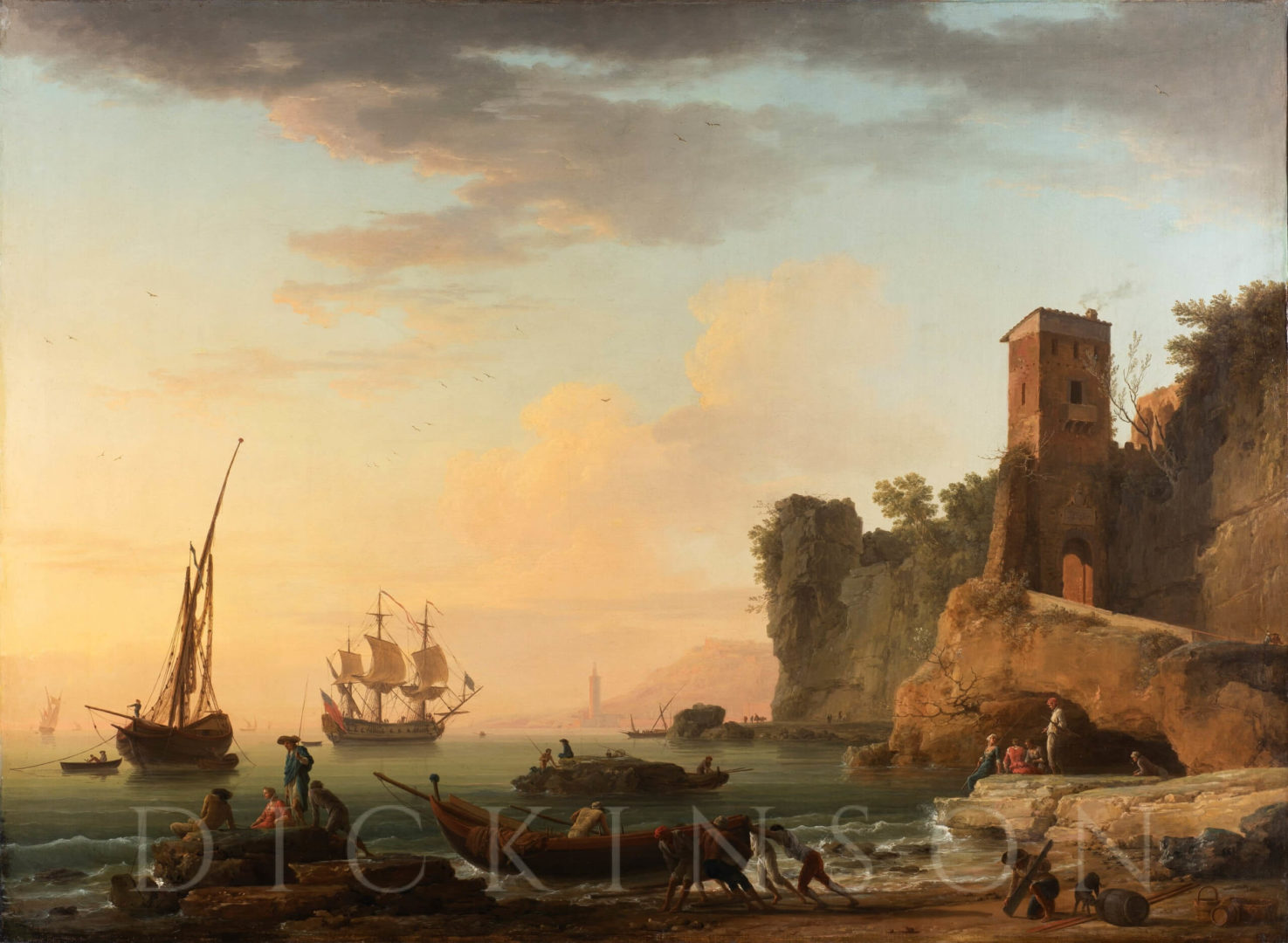Claude-Joseph Vernet
The Port of Genoa, 1752
Provenance:
Captain Charles Manning (d. 1869), Portland Castle, Dorset.
(Possibly) H. Bingham Mildmay.
(Possibly) His sale; Christie’s, London, 24 June 1893, lot 82 (105 gns.).
(Possibly) William Beauclerk, 10th Duke of St. Albans (1840 – 1898), acquired at the above sale.
Agnew’s, London, inv. no. 37062, acquired on 26 Oct. 1967.
Private Collection, acquired from the above on 7 Nov. 1967.
Agnew’s, London, acquired on 2 July 1973, and sold on 27 Feb. 1974.
The Earls of Dartmouth, Blakelea House, West Yorkshire; thence by descent.
Literature:
(Possibly) G. Waagen, Supplement to Treasures of Art in Great Britain: Being an account of the chief collections of paintings, drawings, sculptures, illuminated mss., etc., London, 1857, p. 158 (‘Joseph Vernet – 1 and 2. Of these two large pictures, the view of the port of Genoa particularly pleased me’.)
Exhibited:
(Possibly) London, Royal Academy, Old Masters, 1876, no. 270.
Born in Avignon, where he received his early training, Claude-Joseph Vernet travelled to Rome in 1734 at the age of twenty to become a history painter. His introduction into papal circles was facilitated by his early years in Avignon, which at the time was a papal territory, and Vernet integrated himself into the active French artistic community in Rome, gaining membership to the Académie de France. He soon turned to landscape paintings after discovering the art of Claude Lorrain, Salvator Rosa and Andrea Locatelli, and entered the studio of the successful French marine painter Adrien Manglard.
By 1740, Vernet had established a reputation in his own right, executing commissions for French diplomats and the European Grand Tourists who constituted his regular patrons. He began maintaining a record book of his commissions, the Livre de verité, and in 1743 he was accepted as a member of the Accademia di San Luca, the artists’ guild. As his prominence in Rome grew, so too did his international reputation in France: in August 1746 Vernet was approved by the Académie Royale in Paris. Vernet’s work around the middle of the century served as inspiration to Richard Wilson, Thomas Patch and other British painters who were working in Italy.
In 1753 Vernet returned to France to paint the famous series of Views of the Ports of France for Louis XV. This romantic view off the coast of Genoa, with the entrance to the Port seen beyond the rocks to the right, was executed towards the end of Vernet’s stay in Italy. It is signed and dated 1752, which establishes it in Vernet’s most significant period of achievement, just before his departure from Rome. Vernet’s naturalistic, evocative maritime views were often imaginary but in this instance he gives us a topographical view of the shore near Genoa. The artist’s sense of detail appealed to an Enlightenment-era interest in scientific study, while the figures populating the beach – fishermen and young women, sailors, a dog – are contemporary rather than idealised classical staffage.



